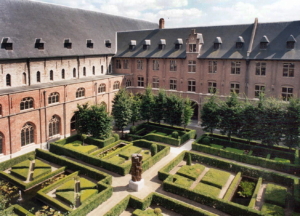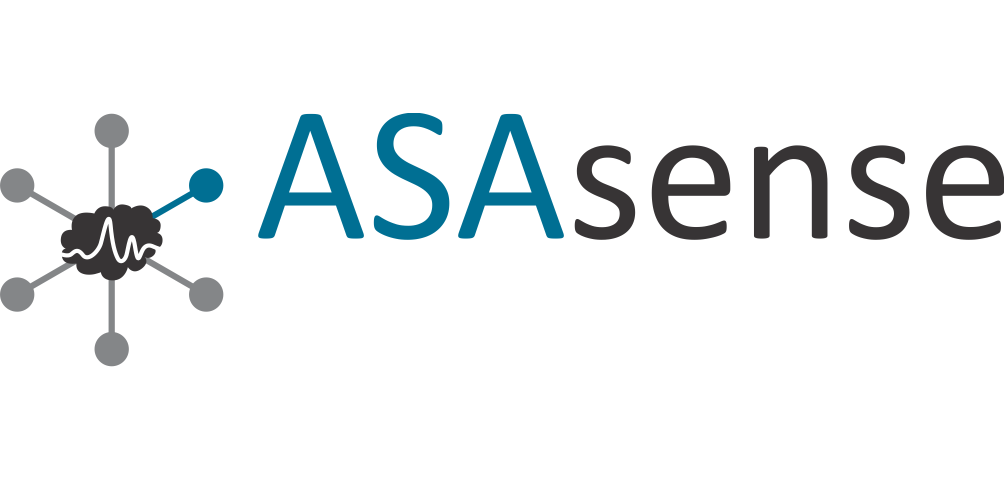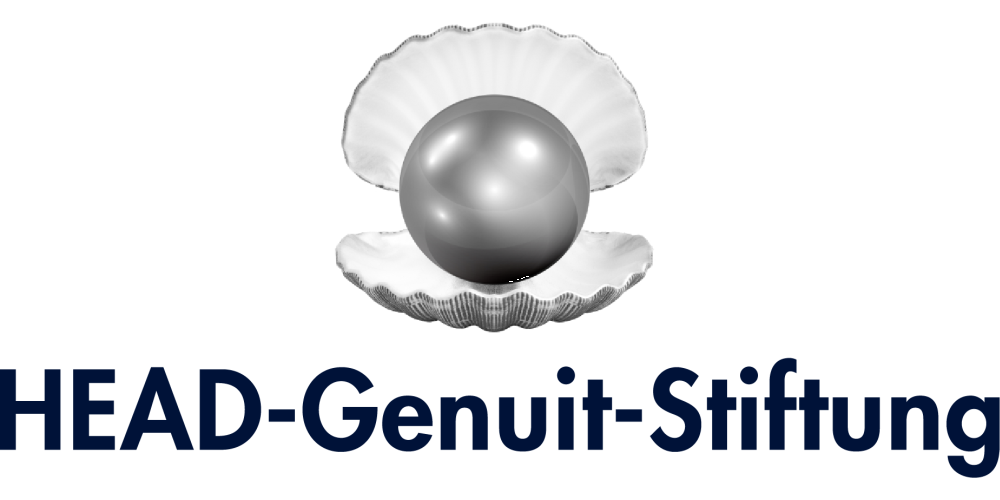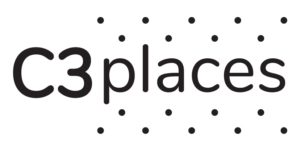Urban Sound Symposium 2019
April 3-5, 2019 in Ghent, Belgium
Plenary program overview
The symposium took place on three days; each day was dedicated to a separate topic:
- Wednesday 3 April 2019: The sound(scape) of the city
- Thursday 4 April 2019: Sound technologies
- Friday 5 April 2019: Sound in urban planning and design
The final program of the symposium is shown below. We are pleased to offer you the possibility to download the presentation slides of a selected number of talks.
Wednesday 3 april 2019 – The sound(scape) of the city
| 12:30 - 18:00 | Registration open | |
| 13:00 - 13:30 | Introduction to urban sound | Dick Botteldooren |
| 13:30 - 14:00 | Urban soundscapes of the world | Bert De Coensel |
| 14:00 - 14:30 | From semantic categories to narratives | Jean-Dominique Polack |
| 14:30 - 15:00 | Perception of urban sound | André Fiebig |
| 15:00 - 15:30 | Coffee break | |
| 15:30 - 16:00 | Sound exposure at home and its health effects | Irene van Kamp |
| 16:00 - 16:30 | Restorative soundscapes | Sarah R. Payne |
| 16:30 - 17:00 | Attractive routes | Catherine Lavandier |
| 17:00 - 17:15 | Break | |
| 17:15 - 18:00 | Debate: future research on the sound of the city | Moderator: Dick Botteldooren Panel members: Brigitte Schulte-Fortkamp, Sarah R. Payne, Klaus Genuit and Jian Kang |
| 19:00 - 23:00 | Dinner |
Thursday 4 april 2019 – Sound technologies
| 08:30 - 09:00 | Acoustic street design | Timothy Van Renterghem |
| 09:00 - 09:30 | Urban low barriers | Jérôme Defrance |
| 09:30 - 10:00 | Traffic noise dynamics | Arnaud Can |
| 10:00 - 10:45 | 2-minute pitch session | |
| 10:45 - 11:30 | Coffee break and posters | |
| 11:30 - 12:00 | Greening and sound | Timothy Van Renterghem |
| 12:00 - 12:30 | Topography for quiet areas and quiet sides | Jin Yong Jeon |
| 12:30 - 13:00 | Building envelope sound insulation in housing | Birgit Rasmussen |
| 13:00 - 14:30 | Lunch break and posters | |
| 14:30 - 15:00 | The role of listening in urban planning | Marcel Cobussen |
| 15:00 - 15:30 | Strategic noise mapping and beyond | Erik Salomons |
| 15:30 - 16:00 | Soundscape indicators and mapping | Jian Kang |
| 16:00 - 16:30 | Coffee break and posters | |
| 16:30 - 17:00 | Sound sensor networks | Bert De Coensel |
| 17:00 - 17:30 | Urban sensors and localization | Donald G. Albert |
| 17:30 - 18:00 | Auralization technology | Maarten Hornikx |
Friday 5 april 2019 – Sound in urban planning and design
| 08:30 - 09:00 | Sound in the broader urban context | Ronny Klæboe |
| 09:00 - 09:30 | Virtual reality for urban design | Luigi Maffei |
| 09:30 - 10:00 | Sensory mapping | Daniele Quercia |
| 10:00 - 10:30 | Coffee break | |
| 10:30 - 11:00 | Co-creating soundscapes: opportunities and risks | Monika Mačiulienė (replaces Aelita Skaržauskienė) |
| 11:00 - 11:30 | Bringing sound into urban public place design | Christine Kerrigan |
| 11:30 - 12:00 | Planning urban ambient sound? | Jean-Paul Thibaud |
| 12:00 - 13:00 | Debate: getting urban sound on the planning agenda | Moderator: Bert De Coensel Panel members: Luigi Maffei, Christine Kerrigan and Jean-Paul Thibaud |
Abstracts of invited talks
Introduction to urban sound
Since the emergence of cities, sound has been an integrated part of people living together on a limited space. Sounds of mobility and transport as well as sounds of entertainment and commerce have been around for centuries. However, with the introduction of combustion and electrical engines, urban sound levels increased but, more importantly, the sound environment also greyed to a monotonous hum enveloping the city. Mechanical sounds hence became a new pollution that needed fighting with noise emission limits and noise immission regulations at all levels of government. Although this led to quieting of vehicles, cooling and heating units, and equipment used outdoors, these sounds often continue to dominate the urban sound environment. Meanwhile, scientific evidence on the benefit for health and well-being of a well-managed urban soundscape has grown. New methodologies, powerful numerical prediction and auralisation tools, innovative monitoring, and new forms of design and co-creation have emerged and allow to create these beneficial environments. Nevertheless, internalization of urban sound in urban planning, mobility planning, and urban design has not fully occurred. Hence this symposium aims to make smart cities embrace sound as their heartbeat, part of their identity, and their balanced development.
Urban soundscapes of the world
The urban soundscape is one of the defining factors of a city. Ambient sounds evoke thoughts and emotions, influence moods, and may even steer behavior. Cities are comprised of a wide variety of outdoor spaces, each with their distinctive soundscape. Thanks to the advent of realistic and affordable immersive audiovisual reproduction systems, such as head-mounted displays providing spatial audio playback, virtual reality could become a valuable tool for interactive participatory evaluation of the soundscape in urban planning and design projects. The Urban Soundscapes of the World project aims to set the scope for a standard on immersive recording and reproduction of urban acoustic environments with soundscape in mind. A reference database of immersive audiovisual recordings of urban acoustic environments worldwide is collected, to be used to evaluate the perceptual influence of acoustic intervention and planning measures. As architects and designers commonly work by example, this project supports the further introduction of urban soundscape design in education and practice.
Applying cognitive psychology to urban soundscapes: from semantic categories to narratives
In the second half of the 1990s, the Laboratoire d’Acoustique Musicale at UPMC started a series of investigations on Urban Soundscapes. Initiated at the request of the French Ministry of Environment, these investigations took into account from their very onset the ecological approach to auditory perception, following the footsteps of J.J. Gibson. Care was taken that sound reproduction was ecologically valid, and a whole methodology, based on E. Rosch’s psychological principles of categorization, was developed with the help of psycho-linguists in order to evaluate this ecological validity. We call it semio-acoustics. The presentation reviews the theoretical background, the methodology and the main results from a series of 5 doctoral theses on how human subjects talk about and describe soundscapes. It includes examples of free categories, semantic categories, prototypical categories, and graphic categories. More recently, we develop the methodology one step further with the help of semioticians, in order to take into account the imaginaries of the human subjects; we obtained full narratives of ideal urban ambiances. We are presently applying the methodology to Urban Soundscapes in a collaborative research project that has just started with Korean colleagues.
Perception of urban sound
Perception is based on mediational processes of putting together a multitude of sensations leading to the recognition of patterns – by constructing perception from sensations the world around us makes sense. As is known, this processing is quintessentially contextual affecting auditory sensation as well as its interpretation leading to the perception of (urban) sound. At the end this results in urban sound perceived as annoying, pleasant, exciting or restorative. It is of particular importance to understand these mechanisms to be able to assess urban sound from the perspective of the perceiver and to reflect the underlying cognitive processing. In this context the consideration of auditory attention is imperative, since attention guides how humans perceive their surrounding world. The attention towards a certain sound source in multi-source scenarios colors the overall perception of the respective entire scenario. Moreover, the specific temporal position of prominent sound events within experienced episodes of urban sound changes perception, which cannot be predicted by means of simply averaging sound energy over time. The talk will summarize the fundamentals of environmental perception in the context of urban sound and will focus on unifying principles of human perception consistently violating some rules of physics.
Sound exposure at home and its health effects
It has been a while that the first WHO guidelines for health protection against environmental noise were published in 1999. Since then many new studies on the health effects of sound exposure at home have been performed and an update of the WHO environmental noise guidelines saw the light in October 2018. The earlier guidelines were primarily focused on transportation noise. At the ministerial Conference at Parma in 2010 the need for guidelines for other sources such as devices, toys and wind turbines was emphasized. In order to achieve this, reviews were prepared on the main health outcomes including annoyance, sleep, cardiovascular disease, cognitive effects, birth effects, hearing impairment and the effectivity of noise interventions in terms of human response and health. These systematic literature reviews over the period between 1980 and 2014 were published in a special issue of the International Journal of Environmental Research and Public Health, spread out over late 2017 and early 2018. This presentation will provide an overview of the evidence including an update since 2014 for some key endpoints. The implications of the findings for noise policy and management will be discussed. Finally, some trends and research needs in the field of sound and health will be presented.
Restorative soundscapes
Mental health issues and stress is rising, with a substantial economic cost on society. People need time and restorative environments to help them recover from stressors and avoid related mental health problems where feasible. Research has shown that environments vary in the restorative experiences they provide. Soundscapes are a part of that experience and also vary in the amount of potential restoration they can offer. But which sounds contribute to making restorative soundscapes? And which sounds disturb the potential for restoration? Are designated quiet places also restorative places? Growing research has highlighted the value of natural sounds, both in rural and urban environments. By providing opportunities to restore which can help prevent stress related mental health issues, we can help form resilient urban communities. To do this we need to consider how soundscapes are created within our urban environments. We need to consider the design of urban environments and how that impacts on soundscapes increasing or decreasing restorative experiences. This presentation will discuss restorative theories, research, and quiet areas. Using examples from ongoing research, Project DeStress, it will explore ways of raising awareness of the design and value of restorative soundscapes among the public and built environment professionals.
Attractive routes
The health benefits of a daily physical activity, and of walking in particular, are widely acknowledged. However, walking in urban environment inevitably leads to an increased exposure to noise, which could be a drawback for choosing this transportation mode. In the past decade, various studies have focused on characterizing and estimating the sound pleasantness perceived at specific locations, on the basis of perceptive and physical measurements. But fewer studies focused on the overall pleasantness of a sound environment that varies along a route in a city. Some of these studies will be presented at the symposium. For in situ experiments, sound pleasantness is assessed at specific locations during the trips and for laboratory experiments, sound pleasantness can be assessed continuously. For both contexts, a global evaluation of the route is also rated at the end of the walk. Acoustic indicators, measured during the walks, make it possible to estimate the global pleasantness of the route. It seems that for short walks (of about 1 minute), a recency effect is observed, which tends to disappear when the duration of the walk increases. Being able to estimate the sound pleasantness associated with an urban route has many potential applications, such as informing pedestrians about the sound along their intended walk, or helping them to choose sound attractive routes.
Acoustic street design
Urban street design influences how sound propagates and consequently impacts exposure levels. In this talk, street acoustics will be built up gradually by increasing complexity going from free field, open field, single facade to parallel facade sound propagation. Facade scattering and absorption are key elements in improving street acoustics. Their impact will be discussed in detail as a potential mitigation measure for road traffic noise sources. Research showed that even small architectural details can largely impact exposure levels not only along the facade but also at pedestrians. The so-called street reverberation is not only a driver for exposure levels, but also strongly influences how urban street sounds are perceived. The related topic of facade reflection corrections that are often needed when analyzing measurements will be discussed. The geometrical design of facades not only influences the exposure in the street itself, but also how sound waves diffract to nearby urban canyons. This is of great importance if one wants to increase the benefits from a quiet side near a building. Acoustic street design thus deserves sufficient attention in urban planning.
Urban low barriers
For the past 20 years CSTB has conducted extensive research on innovative noise reducing devices dedicated to ground transportation noise abatement. Among these are low-height barriers as one of the most promising solutions adapted to urban areas. In this presentation the expected acoustical gain of several types of low-height noise reduction means, some of which vegetated, will be presented and discussed. A focus will be on the calculated and measured acoustic performance of 1 m high barriers along tramways. Another interesting way of assessing acoustical efficiency of such reducing devices is a perceptive approach by comparative listening of audio sequences of soundscape (with and without the barrier for instance). As an example an interactive online decision support tool dedicated to the realization of low barriers will be demonstrated. This tool aims also at considering both performance and integration aspects. A final point will be related to current research on the development of an in-situ performance measurement method for manufactured devices.
Traffic noise dynamics
Multiphysical couplings between traffic models and environmental models are increasingly used for the environmental assessment of traffic regulation strategies, but still very little in acoustics, although very promising. This presentation will review existing initiatives and examine what modalities need to be met in these couplings to ensure the reliability of the results produced. The analysis will be based on a description of existing modelling options for road traffic: traffic models initially aim to capture road traffic phenomena, and to produce variables such as vehicle trajectories, on which the estimation of noise levels can be based, which opens up numerous potentialities. A case study will then be presented, which will look at the impact on the noise environment over an urban network, of different policies for managing travel demand during the morning rush hour.
Greening and sound
The use of vegetation to mitigate noise problems is getting an increased interest nowadays as a relevant ecosystem service and in view of sustainable urban development. Since decades, however, limiting noise exposure by means of vegetation has attracted interest from both researchers and laymen, often leading to highly diverse findings. The relevant physical interactions between sound waves and vegetation elements will be critically discussed in this presentation. In a dense urban environment, however, the available space to apply vegetation is typically scarce. The group of so-called building envelope greening measures, including green roofs and vegetated walls, therefore deserves specific attention. Their application was shown, by means of both measurement campaigns and numerical work, to convincingly reduce sound pressure levels in streets and connected urban canyons. Such building greening measures could thus help to improve urban quiet sides and the relevant actors will be discussed. Even when (physical) sound pressure level reductions would be limited, strong positive effects are often observed related to the perception of environmental noise. An overview is presented on the state-of-art on this topic and the underlying mechanisms will be discussed. In addition, equivalent sound pressure level reductions will be estimated specifically for self-reported noise annoyance, in order to better quantify this important perception related outcome of long-term environmental noise exposure.
Topography for quiet areas and quiet sides
The effect of soundscape quality on recognition of urban users’ quiet areas and factors affecting comfort was investigated along the route from the main road to calm spaces in the city. First, soundwalk and laboratory experiments located positions where differences in soundscape were perceivable while moving from the main road where traffic noise is dominant, to the interior of buildings or green space such as parks. At these positions, changes in landscape indicators and sound marks with time were investigated, and databases of the soundscape were accumulated through VR sound technology applying sound directivity with head-related transfer function (HRTF). Additionally, a big data-based machine learning method was used to explore various human responses to the audio-visual environment; we propose a method for soundscape mapping in real time based on the subjective evaluation results. Finally, we constructed the topography of a smart city with respect to quiet areas and quiet sides. The various sound-environmental factors collected during this process will allow for highly accurate predictions of the soundscape at future points in time, as well as annual change over time for other environmental factors. Soundscape mapping based on the response of city users is a design goal to realize coexistence in real time.
Building envelope sound insulation in housing
For buildings in traffic noise exposed urban areas, it is a challenge to create quiet indoor and outdoor spaces for the residents. Limit values for indoor conditions are found in national building regulations, while outdoor spaces are dealt with in national environmental regulations. Most building regulations in Europe include criteria for the building envelope sound insulation of new housing, and the goal is protection of people against outdoor noise being transmitted into their homes. Noise protection outdoor is dealt with partly by land use restrictions and partly by orientation of buildings and shielding of areas behind the buldings. Since acoustic regulations typically apply to new buildings only and are minimum requirements, several countries have implemented voluntary national acoustic classification schemes with a number of acoustic quality classes for dwellings, thus being a tool for acoustic labelling, in analogy to energy labelling. The presentation focuses on indoor conditions and includes an overview of facade sound insulation requirements and voluntary quality classes in selected countries in Europe, including the diversity of sound insulation descriptors applied. Appropriate sound insulation of building envelopes and between dwellings reduces various noise disturbances and annoyances around the clock, the benefits being improved health and quality of life.
The role of listening in urban planning
Can artists contribute something to the way we reflect on, evaluate, think about, experience, or (re)design the sonic ambiance of a public space? Said differently and more apposite: can artists contribute something that others cannot contribute? And of course, if this open question can be answered in the positive, then the next question will be: “How?” Instead of taking the easy way by claiming that artists can “beautify” an existing environment through aesthetic interventions, I’d rather explore the idea whether their contribution can have a profound social, political, and even ethical impact. The hypothesis that I would like to expound and forfend is that (sound) artists may evaluate, experience, and reflect on the sonic ambiance – a term I use deliberately as an alternative for the term “soundscape” – in a different way than most scholars and users of such a public space. Why? Because they listen differently. In other words, sound artists can teach others first of all to listen, to listen more attentively, to listen unprejudiced, to open their ears for the unexpected. I would suggest that their ways of listening can be characterized as a “listening with” instead of a “listening for”.
Strategic noise mapping and beyond
Strategic noise mapping is a useful tool for global impact assessment of environmental noise in cities. The noise maps yield estimates of noise exposure and its effects on the inhabitants. In this presentation the usefulness and limitations of strategic noise mapping are discussed. To illustrate the usefulness, an example of global impact assessment of traffic noise in the EU is presented. The assessment is based on EU noise maps and includes future traffic scenarios. The results are expressed in terms of prevalence of annoyance and sleep disturbance. Another illustration focuses on the relation between urban form and traffic noise exposure. The concepts of ‘compact sustainable city’ and traffic elasticity play a role here. The form of the building blocks also plays a role. An advantage of closed building blocks, with shielded courtyards, is that inhabitants have access to a quiet side of the dwelling. The potential positive effects of quiet sides and quiet areas such as parks are discussed and illustrated with examples. The accuracy of noise maps is highest at locations where the noise levels are high. At shielded locations such as courtyards, the accuracy is lower. This is due to limitations of the engineering methods that are used for the calculation of the noise maps, including the recently introduced harmonized calculation method Cnossos. A valuable step beyond strategic noise mapping is to perform local analyses at various locations in a city, using advanced calculation methods and noise measurements. An example is presented of a local impact assessment in an urban area with high levels of road and rail traffic noise. By combining noise measurements, model calculations, and questionnaire surveys, a detailed picture of the noise problems in the area emerges. Based on this picture, an optimized noise reduction plan is developed.
Soundscape indicators and mapping
In environmental acoustics, the conventional approach in reducing sound level does not always deliver the required improvements in quality of life. Soundscape is addressing this gap by considering sound environment as perceived, in context, with an interdisciplinary approach. However, soundscapes are hugely complex and measuring them as a basis for environmental design requires a step change to the discipline. This talk, based on an on-going ERC project, will explore the development of ‘soundscape indices’ (SSID), in the movement from noise control to soundscape creation, aiming at adequately reflecting levels of human comfort. Coherent steps for achieving will be discussed, including characterising soundscapes by capturing soundscapes and establishing a comprehensive database; determining key factors and their influence on soundscape quality based on the database; developing, testing and validating soundscape indices; and demonstrating the applicability of the soundscape indices in the management of our sound environment.
Sound sensor networks
The increasing availability and affordability of computing devices, microphones and wireless internet access forms a technological push for the use of distributed sound measurement systems. State-of-the-art smart sound sensing devices now allow to analyze the wealth of information contained within sound in a way similar to how human listeners do. Artificial intelligence and machine listening algorithms are hereby applied to detect the presence of particular sounds, to localize sound sources, or in general to estimate other parameters based on information extracted from sound. Examples of the latter are road traffic composition and intensity to be used for dynamic noise mapping, the state of road surfaces, air pollution levels, or even diagnostics about the state of machine components for predictive maintenance. In this presentation, an overview will be given of the applications of smart sound sensing within the areas of environment and health, mobility, and security.
Urban sensors and localization
A primary characteristic of the urban sound propagation environment is the presence of many buildings, which act as obstacles and cause intense reverberation, scattering, and diffraction of acoustic waves. These complexities produce wave distortions and multiple arrivals that degrade the performance standard algorithms for source location and identification. Measurements of acoustic pulse propagation in a full-scale training village show that a simple pulse is transformed into a complex signature when propagating through this environment, and that diffraction acts as a low pass filter on the acoustic pulse. A finite difference time domain (FDTD) simulation was used to study and interpret the wave interactions in detail. In addition, urban ambient acoustic and seismic noise measurements were conducted in real cities in the frequency range needed for sensor performance assessments. These measurements and computational tools allow methods of localization to be developed and tested in this complex environment. Using a method called time reversal processing shows that source of the acoustic waves often can be recovered from the acoustic signatures, even when there are no acoustic sensors with a direct “line of sight” to the source location.
Auralization technology
Being immersed in an urban environment by means of an audio-visual virtual reality reproduction enables to experience urban environments as they are in reality, or how they could be when for example noise mitigation measures are installed. Virtual reality has become an important tool in the assessment of sound in the urban environment, and its use as a planning tool is increasing. Auralization, a term introduced 25 years ago in analogy with visualization, takes care of the audio part of the virtual reality experience. It was first developed for room acoustic purposes and later applied for urban scenarios as well. This presentation reviews the main components of auralizing urban environments, such as source modelling, propagation modelling and reproduction of sound, and discusses the specific issues that have to be addressed for an authentic auralization, as moving sources and real-time processing. The state-of-the art in auralization for urban environments is presented, as well as expected future developments.
Sound in the broader urban context
Urban areas are centers of human and economic activities. Larger cities are served by airport, rail and harbour terminals and contain industrial point and area sources of pollution. Road and rail traffic cover larger parts of the urban areas, causing noise, vibrations, accidents, unsafety, and air pollution. Transport infrastructure elements are most often perceived as visually ugly. Problem owners focus research on own defined target areas and time slices, that are limited in scope failing fully to take into account the broader urban context. To capture human reactions to urban exposures in complex settings it is not possible to only utilize traditional questionnaires due to the number of questions necessary, falling response rates and respondent fatigue. However, mobile devices provide means of splitting inquiries in smaller partially overlapping pieces, spread over a larger number of respondents over longer time periods, and that can be location aware and adapted to time, exposure situation and place. This requires both a repository of questions and indicators in standard formats to capture non-auditory exposures, coping behavior, and urban contexts and a common international repository for uploading and aggregating data. Modern hyperconvergent meta-cloud environments allow peer to peer networking where repositories can be mirrored, personalized and made locally available for equal rights co-owners, laying a foundation for developing international meta-cloud orchestrated research efforts.
Virtual reality for urban design
After a long incubation period the Virtual Reality (VR) technology has gained more and more attention in several and relevant economic sectors of human life (e.g. automotive, game industry, medicine). Thanks to the possibility to involve the population in holistic experiences, VR can support efficiently decision makers in the field of Urban Planning & Design. Several types of research in the field of Urban Sound Planning and of Environmental Impact Assessment have proved the benefits of the use of VR in several situations: traffic limitation policies, urban renovation interventions, noise barriers installation, wind turbine and the environmental impact of highways.
Sensory mapping
Despite their importance, sensory perceptions have been crucially overlooked by urban planners and scientists alike, not least because they are difficult to record and analyze at urban scale. In the last few years, we have explored the possibility of using social media data to reliably map the smells and sounds of entire cities. To this end, we collect geo-referenced picture tags from Flickr and Instagram. We match those tags with the words in newly created smell and sound dictionaries. In so doing, we are able to map the entire smellscapes and soundscapes of more than ten cities around the world. All the maps are available under goodcitylife.org. Without social media data, those maps have been difficult to produce in the past, further delaying the creation of urban restorative experiences.
Co-creating urban soundscapes: opportunities and risks
Monika Mačiulienė (replaces Aelita Skaržauskienė)
City planners have often many and innovative solutions for how to create open public spaces. However, the dynamic sound perspectives in the urban environment, such as sonic diversity and acoustic ecology, are still very much neglected aspects in planning and architectural design. Digital co-creation perspective could be novel approach to design an enjoyable acoustic milieu and an opportunity for people to choose their sonic environment. Taking advantage of the information and communication technologies (ICT) is a priority in designing attractive, responsive and inclusive public open spaces. Provided with the opportunities afforded by the increased access to the innovative digital technologies many urban designers have employed the ICT tools to transform the public spaces into co-creative spaces. Co-creation offers an interesting perspective, as it enables the integration of a range of ICT-mediated and offline participatory methods and creates a shared domain between the professionals and citizens. However, the concept of digital co-creation itself is rarely clearly defined, operationalized or measured. It is important to note that the society is still experiencing the phase, where research on the ICT focus largely on the technology itself, placing very little emphasis on the social aspects and practical implications of their use. In the context of co-creation research, the Living Labs provide a qualified procedural approach to ensure better social cohesion and the integration of various strands of activities, especially supported by use of advantages and opportunities the ICT and their devices offer. Digital enhanced public open spaces are ideal environments for the co-creation to emerge due to the involvement of entire community and ICT in knowledge creation or aggregation. However, the capability of people to join co-creation activities can be influence by such factors as discrimination for age, gender, sexual orientation, cultural background and disabilities, as well as factors such as income, educational level and geographical urban/non-urban location. Certain threats linked with the communities’ development can be discerned: closing up within one’s communities, constraints of individual freedom, privileged access to community resources and limitations on the engagement of outside persons. The nature of all these problems is interdisciplinary. If value dimensions of the participants acting in a collective network are not aligned and if technological decisions are implemented in an immature environment, these technological solutions can accelerate negative aspects of collective systems and distance even more from the desirable goal of the community. On the other hand, the design and structure of technological solutions and can give impetus to the purposeful development towards common good.
Bringing sound into urban public place design
Do visual and sound considerations receive equal weight in the planning and design of our public spaces? If not, why? Do we need more education about sound for citymakers and citizens, more effective ways to disseminate sound research or more cross-disciplinary collaborations between design and sound professionals? Educating citymakers, designers of the built environment and citizens about the soundscape approach helps us shift from defining sound purely as “noise” and allows us to broaden the conversation on the role of sound in the design of our public spaces. However, how do we put soundscape academic research into practice and words into action? Over the past few years, I have been collaborating with the Sounds in the City team at McGill University to help build relationships with planners, architects, designers, city officials and citizens and experiment with different ways to share and disseminate soundscape research. In my talk, I will discuss some of our learnings from specific projects in Montreal and also highlight the need for more collaboration between sound professionals, planners, designers, city officials and citizens in the design of our public spaces.
Planning urban ambient sound?
The field of urban ambient sound is receiving increasing attention from designers, urban planners and urban professionals, as well as from researchers in the social sciences and urban studies. Is it possible to plan an urban ambient sound and what is the limit of this project? What resources, tools and instruments can we use? But also, to what extent is such a project desirable and for what purpose? These questions will be at the center of the lecture, calling on issues of a technical, spatial, social, urban, ethical and political nature. We will have to explain what we mean by this notion of ambient sound, integrate the role of informal social practices in urban life and specify in how it helps to understand the ordinary sonic experience of city dwellers. One of the arguments will be that it is less a matter of planning ambient sound as such, than of creating favorable conditions for an ambient sound to emerge.





